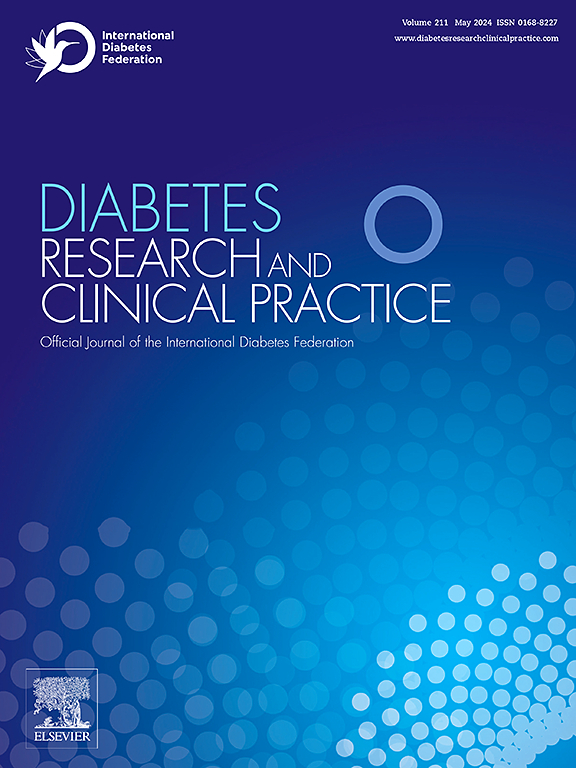低剂量利伐沙班联合低剂量阿司匹林与单独使用低剂量阿司匹林对伴有稳定动脉粥样硬化疾病的2型糖尿病患者体内血小板活化、内皮功能和炎症的影响:RivAsa随机交叉研究
IF 6.1
3区 医学
Q1 ENDOCRINOLOGY & METABOLISM
引用次数: 0
摘要
在动脉粥样硬化患者(包括2型糖尿病患者)中,低剂量利伐沙班联合低剂量阿司匹林的超低剂量治疗方案比阿司匹林单独治疗更能减少血管事件。鉴于2型糖尿病患者的高血小板活化,我们研究了这种联合是否比阿司匹林单独降低血小板活化及其可能的机制。方法75例稳定的动脉粥样硬化性血栓形成疾病患者(12例女性,69岁[65-72]),服用低剂量阿司匹林,参加了一项随机、交叉、开放标签的两组研究:4周阿司匹林(100mg,每日1次),随后4周阿司匹林加利伐沙班(2.5 mg,每日2次);4周阿司匹林加利伐沙班,随后4周阿司匹林。我们研究了尿血栓素A2代谢物(TXM)激活血小板,凝血酶生成(TG),内皮功能通过尿前列环素和血浆一氧化氮代谢物,脂质氧化通过尿异前列腺素,炎症,凝血生物标志物。结果无结转效应。利伐沙班加阿司匹林与阿司匹林单用相比显著降低尿TXM和异前列腺素(分别为20% [95% CI:5 - 31%]和19% [12-26%],n = 73, p <;0.01)。在利伐沙班的最大浓度下,TG速度指数和峰值分别比单独使用阿司匹林降低44%[37-52%]和81%[75-87%]。炎症和内皮生物标志物没有变化。结论极低剂量利伐沙班和低剂量阿司匹林可显著抑制T2DM患者体内血小板功能、TG和异前列腺素的形成。稿号:2019-000610-10。本文章由计算机程序翻译,如有差异,请以英文原文为准。
Effects of low-dose rivaroxaban combined with low-dose aspirin versus low-dose aspirin alone on in vivo platelet activation, endothelial function and inflammation in type 2 diabetes patients with stable atherosclerotic disease: the RivAsa randomized, crossover study
Aims
A very-low-dose regimen of the anti-factor Xa rivaroxaban combined with low-dose aspirin reduces vascular events more than aspirin alone in atherosclerotic patients, including those with type 2 diabetes (T2DM). Given the high platelet activation in T2DM patients, we investigated whether this combination reduces platelet activation versus aspirin alone and the possible mechanisms.
Methods
Seventy-5 patients (12 females, aged 69 [65–72]), with stable atherothrombotic disease, on low-dose aspirin, participated in a randomized, cross-over, open-label, study with two arms: 4-week aspirin (100 mg once-daily) followed by 4-week aspirin plus rivaroxaban (2.5 mg twice-daily); 4-week aspirin plus rivaroxaban followed by 4-week aspirin. We investigated: in vivo platelet activation by urinary thromboxane A2 metabolite (TXM), thrombin generation (TG), endothelial function by urinary prostacyclin and plasma nitric oxide metabolites, lipid oxidation by urinary isoprostane, inflammation, coagulation biomarkers.
Results
No carryover effects were observed. Rivaroxaban plus aspirin significantly reduced urinary TXM and isoprostane versus aspirin alone (20% [95 %CI:5–31 %] and 19% [12–26%], respectively, n = 73, p < 0.01). At rivaroxaban’s maximal concentration, TG velocity index and peak were reduced by 44% [37–52%] and 81%[75–87%], respectively, versus aspirin alone. Inflammation and endothelial biomarkers were unchanged.
Conclusions
Very-low-dose rivaroxaban and low-dose aspirin in T2DM patients significantly inhibit in vivo platelet function, TG and isoprostane formation.
EudraCT Number: 2019-000610-10.
求助全文
通过发布文献求助,成功后即可免费获取论文全文。
去求助
来源期刊

Diabetes research and clinical practice
医学-内分泌学与代谢
CiteScore
10.30
自引率
3.90%
发文量
862
审稿时长
32 days
期刊介绍:
Diabetes Research and Clinical Practice is an international journal for health-care providers and clinically oriented researchers that publishes high-quality original research articles and expert reviews in diabetes and related areas. The role of the journal is to provide a venue for dissemination of knowledge and discussion of topics related to diabetes clinical research and patient care. Topics of focus include translational science, genetics, immunology, nutrition, psychosocial research, epidemiology, prevention, socio-economic research, complications, new treatments, technologies and therapy.
 求助内容:
求助内容: 应助结果提醒方式:
应助结果提醒方式:


